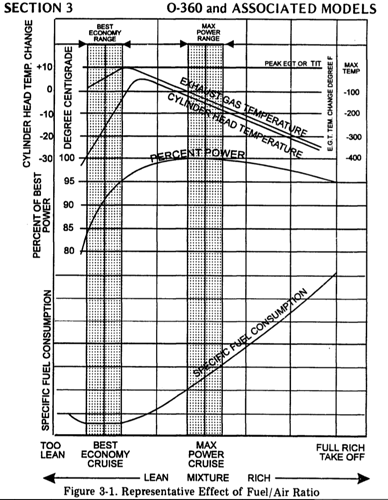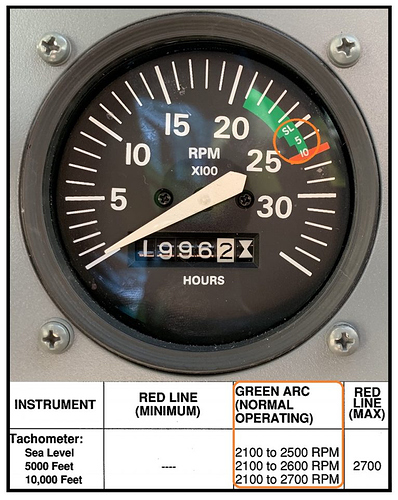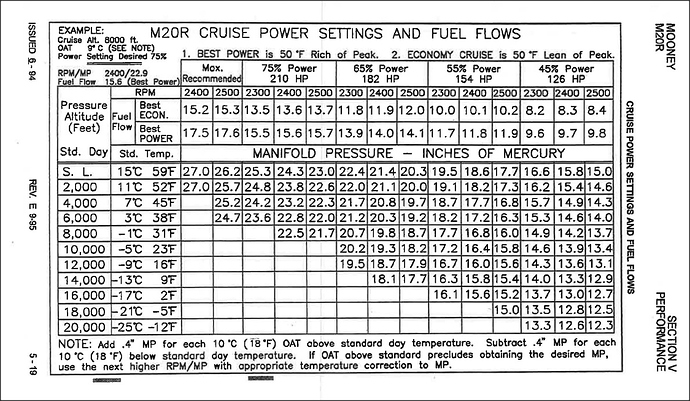Careful, this is not true. In fact, the typical naturally aspirated engines found on the trainers like the C172 are typically hottest at exactly where the POH recommends them to be… at 50ºF ROP. This is explained in Mike Busch’s book “Engines” (great book to learn all about this topic). In fact, Peak EGT is cooler than 50º ROP (in terms of CHT), and ideally, for these engines, 20ºF LOP will give you best economy and is the cleanest setting for the engine and the environment.
PS: Sorry for being a bit picky about this topic but I am inexplicably fascinated by this, and that’s exactly why I bought Mike Busch’s book “Engines” and learned as much about it as I could… don’t ask me why 
I was trying to be general in my explanation. In real engines ofc things can change but from physics standpoint lean mixture is hotter. High performance pistons like WW2 warbird had trouble with engines overheating for example even with fully open cowl flaps and had to over rich to get help from the fuel to cool the engine, but they had turbochargers or superchargers. Ofc trainers will not have a problem like this  But for example a C210 turbo can have CHT problems at higher altitudes,
But for example a C210 turbo can have CHT problems at higher altitudes,
Absolutely no problem, this is how we learn. I’m also fascinated by this topic. Feel free to keep correcting me if I mess up 
About fuel flow increasing with leaning the mixture think it is a bug. I try to think of an explanation, like the fuel injection system limiting it or something, but could not find anything like that. Never seen this in any other sim before.
From my understanding (of what I read from the book), the issue with some engines is that they are so unbalanced, that when trying to run them LOP, they will start running rough as some cylinders will get so little fuel, they will not have a combustion at all, and as such some engines cannot run LOP at all. Would you say that’s the case for the WW2 old timers?
In the real planes I’ve flown (C152 and C172) they run pretty smoothly, even LOP, so that’s normally where I run them, assuring I’m at or below 70% power (we don’t have CHT gauges on them).
Your explanation is correct for some current GA aircraft.
WW2 war engines had much stricter tolerances, a worn or damaged engine could experience the problem you describe, but the main problem there was the heat. The more power you make the more heat you generate. It was just too hard to cool those beasts of an engines. The turbo or supercharger provides enough air to run at high power even at high altitude, but the thin air just can’t cool the engine enough. That is why I mentioned the C210 turbo as a modern example.
BTW are there supercharged pistons in the modern GA world ?  I know about some turbos.
I know about some turbos.
Also modern instruments have per cylinder EGT and CHT display so you can actually see the situation you described. It is a real.
Interesting! Best economy setting is lean of peak EGT? Never would’ve known. Why is it that we’re taught to either lean to best RPM (which is often barely possible… it’s incredibly hard to tell if the RPM has changed) or to 50° ROP? And I was actually taught that you could also lean to the top of the green arc if you’re leaning at 3,000 ft on climb.
Yep, but then it becomes “impossible” to run peak EGT, as cylinders peak at different settings (due to the imbalance). To be honest, I don’t know how one would choose which reference to take to run, for example, 20ºF LOP… do you take the cylinder with the highest EGT? The one with the peak at the leanest setting? Hmm…
I know how Mike Busch does it… he ignores EGT, he sets the mixture as lean as possible until the engine is rough, and then progressively enriches the mixture until the hottest CHT reaches around 400º and keeps it there.
Max RPM is basically best performance (on a fixed pitch prop), so that’s easy. But it’s also a bit dangerous, you shouldn’t do this above 75% power (check the performance tables), and ideally you should be under 70%.
What Mike Busch explains in his book is that this 50ºF comes from the time when these POH’s were actually written… like 5, 6 decades ago, before these high technology engine gauges were available… so they gave the best advice they could at the time, but it turns out it’s quite wrong ![]()
This is actually quite wrong. What you have in the tachometer are a few “marks” at SL, 5 (5000 feet) and 10 (10 thousand feet). These are indicators of 75% power and basically it means that, at 5000 feet, if you are under the 5 mark, you are under 75% power and could lean.
So the general “rule of thumb” is that if you are cruising at or above 3000, it’s very difficult to be above 75% power and you can lean… and if you are CLIMBING above 5000, it’s also very difficult to be above 75% power and you can lean. Such a fascinating topic isn’t it??
There are several approach. Busch approach is a good general one, usable on any piston and you can’t go too wrong with it but it wont be “totally optimal” but will always work (big advantage!  )
)
If you have modern per cylinder instrument as far as I know, yes you select the highest temp and use that to lop (this is basically Busch approach just visualized on an instrument  )
)
PS: Are you ever above the top of the green arc when climbing??? I would say something is wrong in this case…
EDIT: Ah wait, I guess you mean leaning to the top of the green arc from below… but I would be really surprised if you ever reach it, assuming you are climbing at Vy (75 KIAS?)
The chart shows decreasing fuel flow with decreasing power and with increasing altitude, but we don’t really the “curve” of fuel flow according to mixture lever position…
Maybe there’s this very small initial “positive loop” effect in real life, but in any case I think we’ve seen sim and real life are quite difference in behavior, at least regarding the C172.
This is a great discussion! I sometimes enjoy these exchanges as much as the Flight Sim… always something new to learn…

Hm? I’m usually above the green arc while climbing below 3,000 ft, yes. That’s standard for a C172 takeoff using full rich mixture. Fuel flow in the initial climb would be somewhere between 10 and 15 GPH ish. At 3,000 ft I’d lean downward to approximately the green arc.
I’m talking about the green arc of the fuel flow gauge, not the tachometer… idk why anyone would lean to get the tach to be in the red. I think I see the confusion now. Not leaning in reference to the tach’s green arc, but the FF’s.
But I’ve never noticed those 75% power indicators! Good to know so that you can easily see the highest power setting you should be cruising at. I know it’s in the POH in the cruise performance charts, but nice to see in the plane.
Bear in mind that this C172SP is / should be, a 180hp fuel injected IO-360 engined aircraft, not an O-320 with a carburettor, note the lack of Carb Heat button. So numbers might vary from the ones being shown on this thread.
See page 3-23 for fuel compsumption vs power settings:-
Interesting… I’ve never heard of setting anything according to the fuel flow’s green arc… now you got me curious as to what exactly the top of the fuel flow green arc means! Any idea?
To which numbers do you refer to?
Any that are using a C172 with an carb fitted O-320 rather than the fuel injection iO-360 powering the C172SP modelled in the sim.


